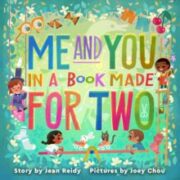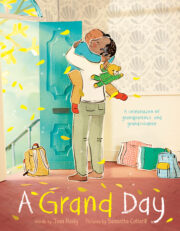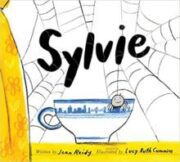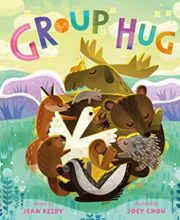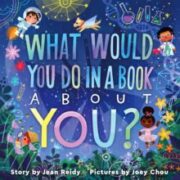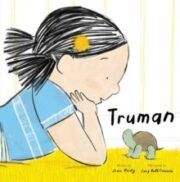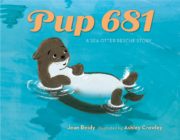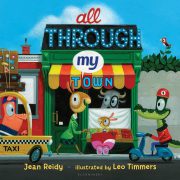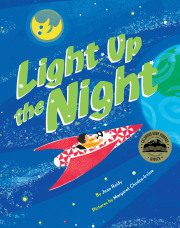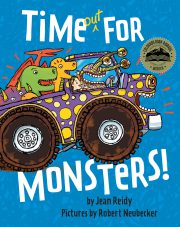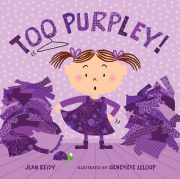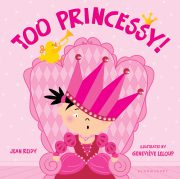 Author, Jenny Goebel, will tell you she’s led a charmed life. But when you get to know her, you quickly understand her life has little to do with luck and everything to do with Jenny. She’s sweet, kind, caring and – most of all – talented. Today she’s talking about world building and her latest novel FORTUNE FALLS. No doubt, her readers are the lucky ones – I’m sure you’ll agree! Take it away, Jenny!
Author, Jenny Goebel, will tell you she’s led a charmed life. But when you get to know her, you quickly understand her life has little to do with luck and everything to do with Jenny. She’s sweet, kind, caring and – most of all – talented. Today she’s talking about world building and her latest novel FORTUNE FALLS. No doubt, her readers are the lucky ones – I’m sure you’ll agree! Take it away, Jenny!
Building a Charmingly Twisted World
A very lucky thing happened to me shortly after my debut middle grade novel, Grave Images, was published in the fall of 2013. My editor at Scholastic, Mallory Kass, came to me with an idea she had for another book—one about a magical town where superstitions are real.
Don’t step on a crack, or you’ll break your mother’s back.
Hold your breath when you pass a graveyard.
Find a penny, pick it up, all day long you’ll have good luck.
It sounded like an incredibly fun and original premise and I didn’t hesitate to jump at the opportunity. At the time, however, I had no idea how resounding the effects of warping this one seemingly frivolous aspect of life would be. Building a world much like ours, only twisted, proved to be a tremendous challenge.
I think my biggest mistake, one that resulted in a number of false starts for Fortune Falls, was being overly anxious —story of my (creative) life. I launched into the construction part a little too quickly. Eventually (with a great deal of guidance from Mallory and from my critique partners), I realized that the key to making the unbelievable seem believable was to slow down and ask the right questions before barreling ahead with the world building. The following questions are the ones I found to be most helpful.
What’s the main problem?
Whether the setting is real or imaginary, every story needs a problem that can be compounded upon. Therefore, this was a logical first question to ask. And, in a town where superstitions are real, bad luck is going to present more problems than good luck. So an unlucky main character doing something to further aggravate her fate—say something like break a mirror—seemed to be the most compelling place to start.
But the questions couldn’t stop there. If bad luck and good luck reigned supreme, why would anyone take unnecessary chances? Why would a hapless girl pick up a mirror in the first place?
Once I had a satisfying reason for my main character, Sadie, to break a mirror and get caught up in such a dire predicament (I’m not going to tell you how she breaks it—you have to read the book!), I was fairly confident I could make the plot work.
What is society like?
The next step was to take a hard look at how life in this alternate world would be affected by the skewed parameters I was imposing.
First, how would society respond to the disparities between the lucky and the less fortunate? In a town where so much hinges on this one fantastical element, what precautions would be taken to prevent the horrendous luck of some from complicating the charmed lives of others? Whatever the society’s response would be, I knew it should have a significant impact on my main character.
Solution: The Luck Test, a sorting process for the inhabitants of Fortune Falls. Because this is a middle grade novel, it only made sense for Sadie’s entire destiny to be determined by this test at the ripe old age of twelve. And, of course, she would have to face this test after breaking the mirror (gotta compound the problem, right?)
Commerce?
If lucky items were easy to come by, the solution to all of Sadie’s problems would be too easy. Therefore, I had to build an economy for Fortune Falls where supply and demand drove up prices for four-leaf clovers, rabbit’s feet, and lucky horseshoes. To illustrate this idea, I added a scene at Lucky CharmZ, which is basically a black-market shop for all things luck-related, and contrasted it with the boutiques where the more fortunate citizens do their shopping.
What rules are there governing the magic/lucky charms?
Another part of building the economy was making the rare charms consumable, and assigning a value (based on the length of effectiveness) to each one.
Setting these imitations and creating rules around how the charms would work allowed me to create an atmosphere where it wasn’t entirely impossible for Sadie to reverse her luck but was unlikely enough to present a sufficient challenge.
How does living in this world affect my main character’s daily Life?
After I tackled some of the larger scale questions, it was time to look at how Sadie’s daily life would be affected. I wanted to impress upon the audience from the very beginning what a burden it would be for a hapless person to live in a world where bad luck was far more than an inconvenience. So in the very first chapter, I put Sadie in a situation familiar to most school-aged children—walking down a sidewalk and avoiding cracks. Then I twisted the lens by showing a mother with a halo cast, an “all too common sight in Fortune Falls.” Providing this bridge of the familiar and then skewing the expected outcome, or gravity of the situation, was crucial for building a strange, but believable world.
Character development?
Exp loring what impact all of this would have on Sadie’s character was the final, fundamental aspect of making this outlandish tale seem possible. Knowing that fate wasn’t on her side, it seemed unlikely that Sadie would be bold and reckless. But I couldn’t have her be too disparaged either, or it wouldn’t be believable that she was resilient enough to overcome the obstacles before her. It was clear she needed places in her life where she could find redemption. This redemption comes for Sadie in the form of friendship and learning to rely on her own cleverness and aptitude to see her way through some very bleak times.
loring what impact all of this would have on Sadie’s character was the final, fundamental aspect of making this outlandish tale seem possible. Knowing that fate wasn’t on her side, it seemed unlikely that Sadie would be bold and reckless. But I couldn’t have her be too disparaged either, or it wouldn’t be believable that she was resilient enough to overcome the obstacles before her. It was clear she needed places in her life where she could find redemption. This redemption comes for Sadie in the form of friendship and learning to rely on her own cleverness and aptitude to see her way through some very bleak times.
Once I restructured my approach to writing Fortune Falls, things went much smoother. Writing is forever a learning process. At least I know now that if I’m going to set my stories in twisted worlds, I must ask myself some very probing questions before I ever start building.
Jenny Goebel is the author of Fortune Falls, Grave Images, and The 39 Clues: Doublecross Book 3: Mission Hurricane. She lives in Colorado with her husband and three sons who avoid stepping on cracks and walking under ladders, but have been known to consort with black cats.



